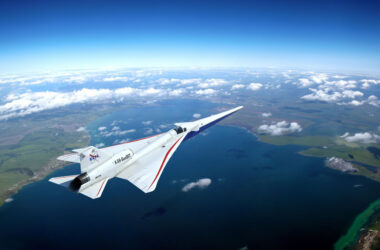The UK’s Maritime Autonomy Surface Testbed (MAST) has undergone trials in the Tidal Thames today. The craft is an unmanned surface vessel (USV) based on an innovative Bladerunner hull shape. The boat does not carry weapons and is instead designed to explore autonomously to support non-lethal surveillance and reconnaissance roles – it is a robotic spy ship.
Measuring in at 32ft the MAST is one of over 40 Autonomous Systems taking part the Royal Navy’s “Unmanned Warrior” trials this autumn.
The Royal Navy has created “Unmanned Warrior” to allow Engineers to demonstrate new technology. The event will be the biggest event of its kind, and will look at ideas that will help influence Naval Warfare over the next decade.
Maritime Autonomy Surface Testbed (MAST), an unmanned surface vessel (USV) based on the innovative Bladerunner hull shape undergoing trials in the tidal Thames and the patrol vessel HMS Archer. All images via the Royal Navy
MAST was developed by Portchester-based ASV Ltd and was funded as part of research from the Defence Science and Technology Laboratory (Dstl).
Subscribe
If you enjoyed this article subscribe to our mailing list to receive weekly updates!
MAST aims to operate autonomously in its unmanned mode; sensing other vessels in the immediate vicinity and avoiding them. It uses onboard avoidance algorithms to avoid collisions, but when operating on busy waterways (like the Thames) it has a helmsman on board who can take over the controls.
The craft is also designed to provide a test bed to host a range of new technologies to allow the MOD (Ministry of Defence) evolves its tactics for autonomous systems.
Peter Pipkin, Fleet Robotics Officer Commander explained that “This is a chance to take a great leap forward in Maritime Systems – not to take people out of the loop but to enhance everything they do, to extend our reach, our look, our timescales, our efficiency using intelligent and manageable robotics at sea”.
While the Navy is exploring a range of new technologies, from ‘big data’ to ‘3D Printing’, autonomous navigation offers significant short term gains. If a small craft able to reach very high speeds but be operated remotely or by autonomous navigation systems it means the Navy will be able to use it reconnaissance without putting the lives of service personnel in harm’s way.












